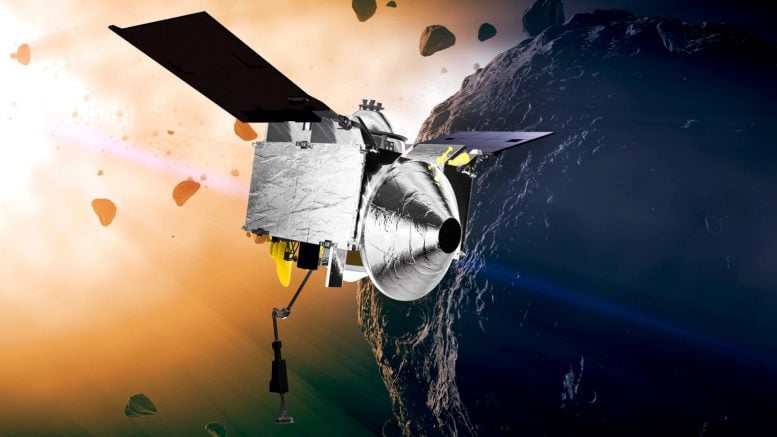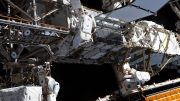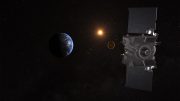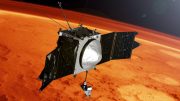
NASA’s OSIRIS-APEX spacecraft has successfully navigated a critical phase of its mission, coming 25 million miles closer to the Sun than initially planned, to eventually rendezvous with asteroid Apophis in 2029. Credit: NASA’s Goddard Space Flight Center
NASA’s OSIRIS-APEX spacecraft successfully completed a close approach to the Sun, adjusting its solar array to protect against heat and is now en route to asteroid Apophis for a 2029 rendezvous.
Preliminary telemetry indicates that NASA’s OSIRIS-APEX spacecraft successfully completed a two-month operation that brought it 25 million miles closer to the Sun than it was designed to function. The spacecraft continues its journey to reach asteroid Apophis in April 2029.
The OSIRIS-APEX spacecraft, formerly known as OSIRIS-REx, repositioned one of its two solar arrays to shade critical components from the Sun’s heat during its January 2 close pass, or “perihelion.” When it returned to a thermally safe distance of about 60 million miles from the Sun in early February, OSIRIS-APEX rotated its array back into place to help generate power.
The limited telemetry available suggests that OSIRIS-APEX performed as predicted during the perihelion. It will take a few months for the mission team to conduct a full assessment of the spacecraft’s performance, during which it flew to roughly half the distance between Earth and the Sun.
During perihelion, OSIRIS-APEX goes into “Fig Leaf” configuration to shield itself from the Sun. Credit: NASA’s Goddard Space Flight Center Conceptual Image Lab
Since early December 2023, engineers have had limited information about spacecraft status, as the spacecraft was configured for its safety. This included orienting its main antenna such that high-speed communication with Earth wasn’t possible.
But, in mid-March, the team finally will be able to point the spacecraft’s powerful high-gain antenna toward Earth and download the data OSIRIS-APEX collected during perihelion.
Engineers also plan to turn on and test the spacecraft’s instruments in early April and will provide a spacecraft health assessment in May to determine any possible degradation to surfaces or components caused by the extreme heat it endured. Until then, the team will carefully monitor the spacecraft to ensure it continues to function as expected.
The January perihelion was the first of seven perihelions the spacecraft will complete to reach Apophis, six of which will bring OSIRIS-APEX within 46.5 million miles of the Sun. The second perihelion is scheduled for September 1, 2024.









Be the first to comment on "From Fiery Perihelion to Asteroid Encounter, OSIRIS-APEX’s Epic Journey"